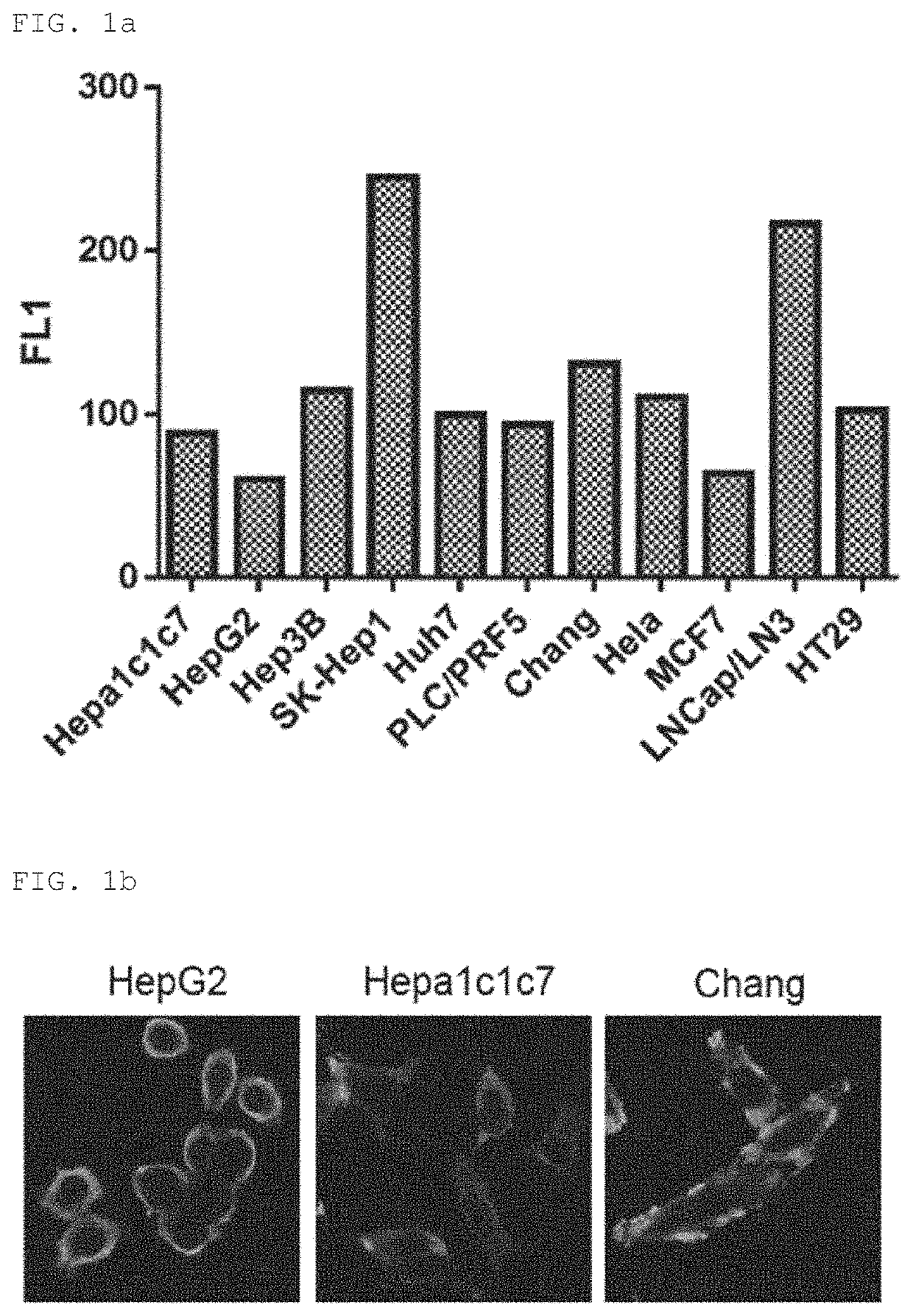Antigenic composition for detecting auto-antibody with specific response to exosomal protein EIF3A, and method for diagnosing liver cancer using antigenic composition
an antigen composition and exosomal protein technology, applied in the field of antigens, can solve the problems of low sensitivity and specificity for cancer diagnosis, obstacles to obtaining usefulness, acquisition of autoantibodies to be analyzed,
- Summary
- Abstract
- Description
- Claims
- Application Information
AI Technical Summary
Benefits of technology
Problems solved by technology
Method used
Image
Examples
example 1
on of XC90 Autoantibody Derived from HBx Mouse
[0102]In order to acquire autoantibodies produced during carcinogenesis, an HBx transgenic mouse which develops liver cancer similar to human liver cancer was used. Spleen cells were obtained from HBx transgenic mice, in which development of liver cancer was confirmed, as a B cell group, and fused with a mouse myeloma cell Sp2 / 0 to prepare a B cell hybridoma cell line according to a common B cell hybridoma preparation method. Primary selection of the fused cells was performed using HAT medium (hypoxanthine-aminopterin-thymidine medium), and only clone-forming cells were cultured separately. The cells, in which cancer cell-reactive antibodies were detected in the culture medium of the clone-forming cells, were only selected and maintained.
[0103]The reactivity of cancer model mouse-derived autoantibodies against cancer cells was examined by flow cytometric analysis of cancer cell line after intracellular staining following the fixation and...
example 2
tion and Purification of XC90 Antibody Isotype
[0106]An isotype of XC90 antibody was determined by analysis using a mouse antibody isotyping kit, and as a result, it was IgM type.
[0107]For analysis of XC90 antibody-specific reaction, a monoclonal antibody was purified. Cell culture medium obtained by culturing a large amount of XC90 antibody-producing B cells or an antibody-producing cell was injected into the peritoneal cavity of mice, thereby acquiring ascites fluid. The ascites fluid was applied to mannose-binding protein-agarose (Pierce) or protein L agarose to purify IgM type antibody.
[0108]After SDS-PAGE, the purified antibodies were confirmed by Coomassie staining, and protein quantification was performed by a Bradford method.
example 3
n of XC90 Antibody-Specific Antigen in Various Cancer Cells and Identification of Antigen Protein
[0109]To examine reactivity of the XC90 monoclonal autoantibody purified in Example 2 for various cancer cell lines, intracellular staining of the various cancer cell lines was performed in the same manner as in Example 1, followed by flow cytometry (FIG. 1A). As shown in FIG. 1A, expression of XC90 antibody-reactive antigen was observed in liver cancer cell lines including HepG2, SK-Hep-1, Huh7, etc., and other cancer cell lines including HeLa, HT29, etc., and in particular, overexpression of the autoantibody was observed in SK-Hepl liver cancer cell line and LNCap / LN3 prostate cancer cell line.
[0110]Further, to examine the intracellular localization of the antibody-reactive antigen expression in cells, confocal microscope was used to observe the cells after intracellular staining, and as shown in FIG. 1B, strong staining was observed in the cytoplasm.
[0111]Expression of the XC90 antibo...
PUM
| Property | Measurement | Unit |
|---|---|---|
| concentration | aaaaa | aaaaa |
| molecular weight | aaaaa | aaaaa |
| molecular weight | aaaaa | aaaaa |
Abstract
Description
Claims
Application Information
 Login to View More
Login to View More - R&D
- Intellectual Property
- Life Sciences
- Materials
- Tech Scout
- Unparalleled Data Quality
- Higher Quality Content
- 60% Fewer Hallucinations
Browse by: Latest US Patents, China's latest patents, Technical Efficacy Thesaurus, Application Domain, Technology Topic, Popular Technical Reports.
© 2025 PatSnap. All rights reserved.Legal|Privacy policy|Modern Slavery Act Transparency Statement|Sitemap|About US| Contact US: help@patsnap.com



